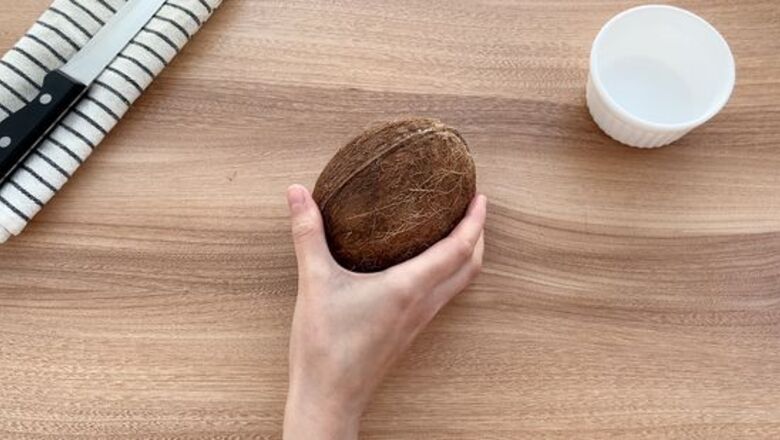
views
Purchasing and Opening the Coconut

Buy a coconut that's free of cracks and damage. Before you purchase your coconut, examine the surface of it to make sure that there are no cracks or mold on it. Healthy coconuts will be heavy because they are filled with liquid. Shake the coconut to see if you can feel the liquid inside. Coconut water helps keep the white flesh of the coconut from drying out.
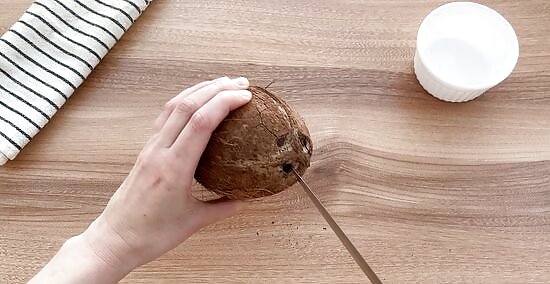
Puncture the eye of the coconut. The eye of the coconut will look like a dark circle. Often there is tree eyes in the coconut. Find the softest one and press against it with a sharp object like a knife, screwdriver, or wine opener. Your tool should easily puncture through the hard shell and into the flesh of the coconut.
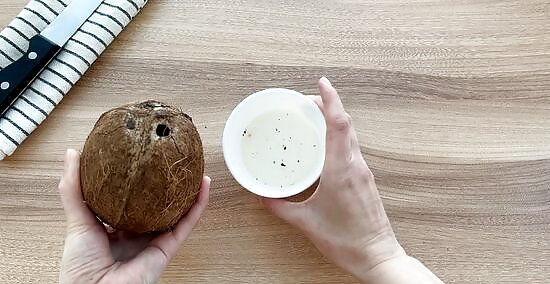
Drain the water from the fruit. Once you've punctured past the hard shell, turn the coconut over and drain the water out of it into a bowl. If you want, you can drink the drained coconut water.

Crack open the coconut with the back of a heavy knife. Rotate the coconut in your hand and rap against the side of it with the back of a heavy kitchen knife. Make sure that the blade isn't facing the coconut. As you rotate it, you should hear and see it crack open.

Throw the coconut against a hard surface to crack it open. Place the coconut inside of a plastic bag and throw it hard against the concrete floor or a brick wall. This will shatter the coconut apart and make it easier to get at the white flesh of the fruit.
Shredding the Coconut with a Food Processor

Pry the white meat from the brown skin. Use a flathead screwdriver or a spoon to pry the white meat of the coconut from the surrounding skin. If your coconut is in pieces, you can just pare off the skin using a sharp knife.
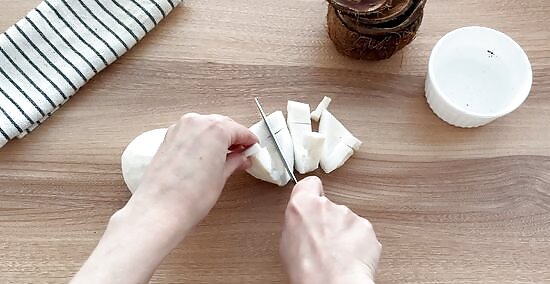
Cut the coconut flesh into smaller pieces. If your coconut flesh came off in big chunks, it might not fit in your food processor. Cut the pieces of coconut into smaller squares so that it can fit in your food processor.
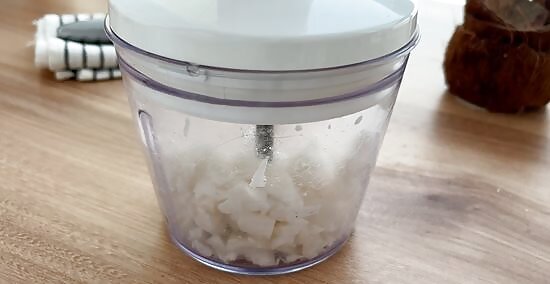
Pulse the coconut in the food processor. Take the white pieces of coconut that you cut off and put them into your food processor and pulse it for 10-15 seconds.
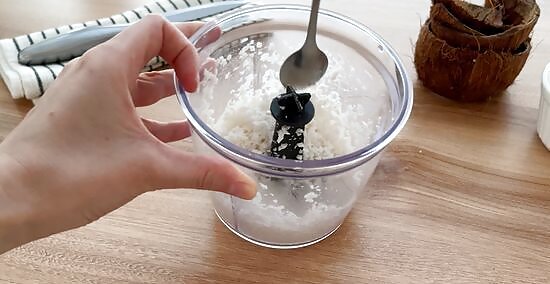
Stop the food processor and scrape off the edges. Open the top of the processor and scrape the coconut that got stuck to the sides of the processor.
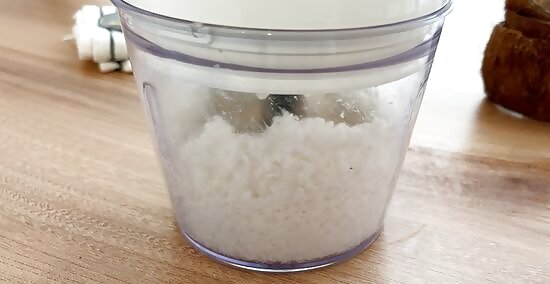
Grind the coconut again. Continue processing the coconut until it reaches the consistency that you want. Once you're done grinding it up, you can put the flakes in the refrigerator or dehydrate them. Fresh coconut flakes will stay good in the refrigerator for two to three days.
Grating Coconut with a Box Grater
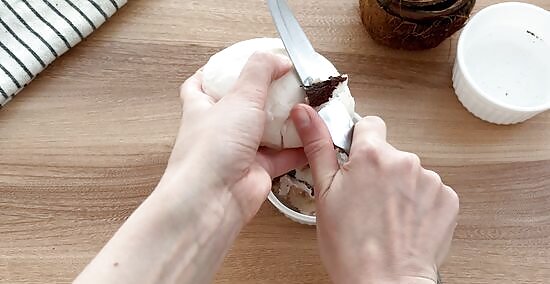
Remove the white coconut flesh from the skin. Pry the coconut from the skin by shoving a flathead screwdriver in between the white flesh and the brown skin. Bigger pieces are easier to grate when you are using a box grater, so try to remove large pieces.
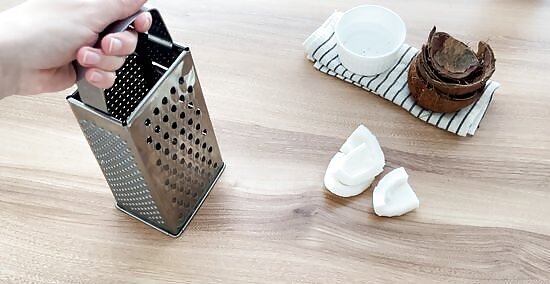
Hold the grater by the handle. Using your non-dominant hand, grab onto the top handle of the box grater and hold it tightly. As you grate, use your arm to keep the grater pressed tightly against the cutting board or table.
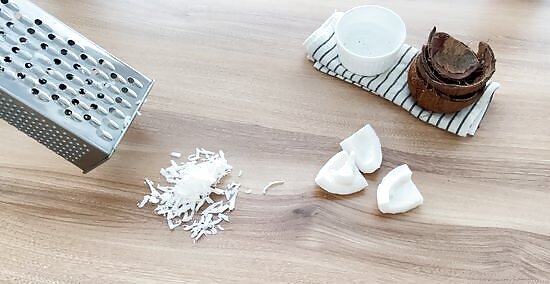
Hold the coconut against the holes and move it back and forth. Choose how small you want your coconut flakes. Use the large holes on the grater if you want to have larger coconut flakes and the medium or small holes for smaller flakes. Grab the white coconut flesh with your dominant hand and move it back and forth against the holes of the grater.
Drying the Coconut
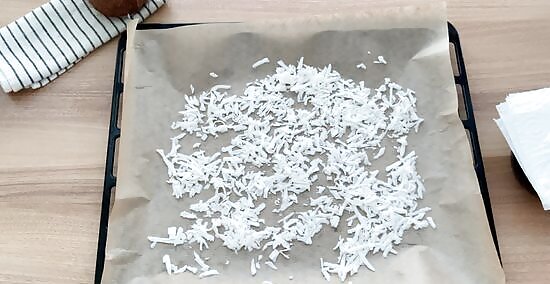
Pour the coconut flakes onto an oven sheet or tray. Take your shredded coconut and spread it evenly onto a cooking sheet. Use a paper towel to pat down the flakes and remove as much moisture as you can before you dehydrate them.

Put the coconut in a convection oven for two hours. Place the cooking sheet inside of a convection oven at 100 - 125°F (40 - 50°C) for two hours. This will draw the moisture out of the coconut and dry out the flakes.
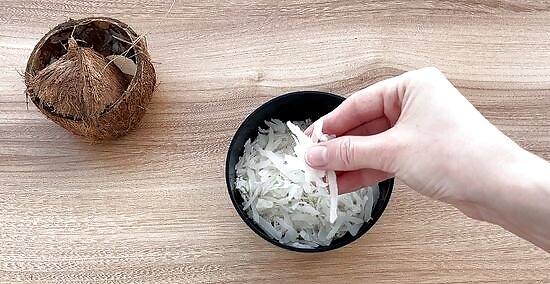
Dehydrate the flakes for six hours at 130°F (54.4°C) . If you have a dehydrator, you can use it to dry out your coconut instead of the oven. Place the flakes inside of the dehydrator and allow them to dry out for eight to ten hours, or long enough until they are dried to your liking. Dehydrated coconut flakes will last 2-3 months in a zip lock bag.



















Comments
0 comment